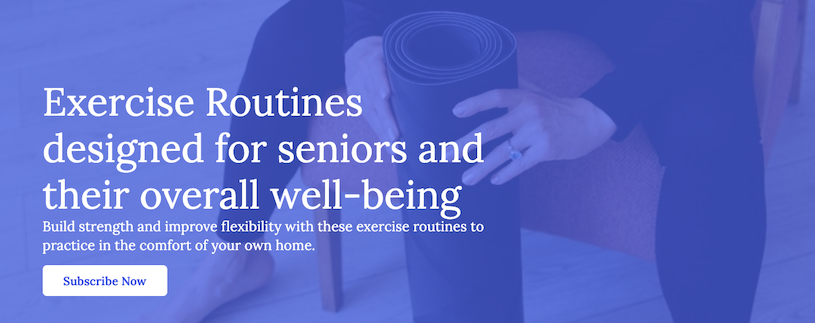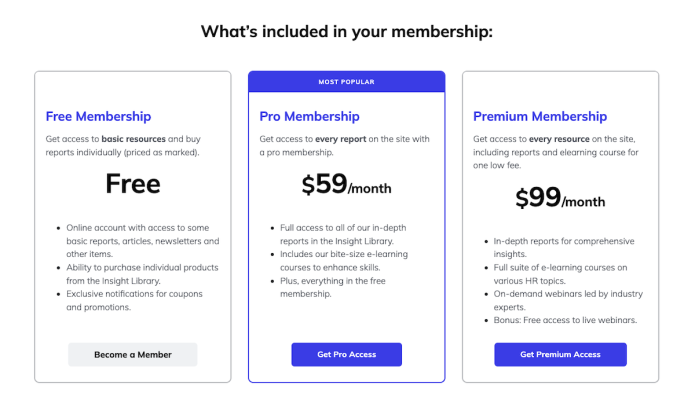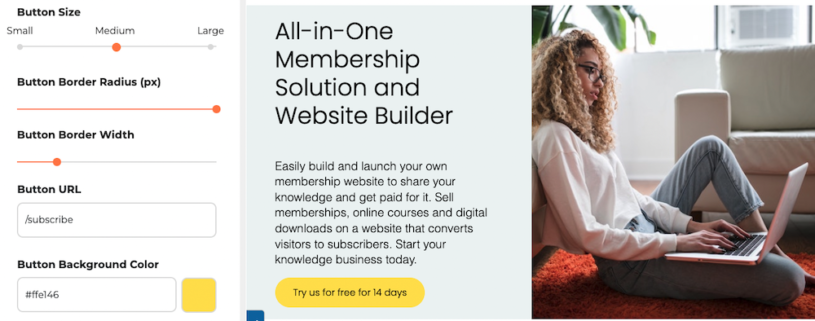
A successful website homepage that converts visitors into members relies on three key ingredients: clear messaging, trust-building elements and clear calls to action (CTAs).
First, clear messaging is essential to communicate your value proposition. This helps align visitor intent with your solution. Next, integrate trust-building elements that reassure visitors of your product’s credibility. Finally, use action-oriented CTAs that make it easy for visitors to take the next step, whether subscribing, signing up, or purchasing.
1. Craft a banner headline that aligns with visitor intent
Your banner headline is the first text visitors see, and it plays a critical role in capturing their attention. To be effective, it must quickly convey the essence of your value while aligning with the visitor’s intent. This means your headline should directly address the specific goal or problem the visitor is looking to solve during their visit.
Action-oriented and intent-driven text is key to keeping visitors engaged. Instead of using generic statements like “Get Fit,” craft messaging that speaks to their immediate needs, such as “Exercise Routines Designed for Seniors and their Overall Well-Being”. This type of targeted, benefit-focused headline not only resonates with your audience but also guides them toward taking action, increasing the likelihood of conversion.

2. Use benefit-oriented subheadings
Use descriptive subheadings paired with concise paragraphs to highlight your value proposition and explain how your product addresses specific problems. Emphasize key benefits rather than just listing features.
When potential customers visit your website, they're typically seeking solutions to their pain points. Your goal is to provide just enough relevant information to inform and engage them without overwhelming them with unnecessary details. Too much irrelevant content can confuse or distract visitors, so focus on delivering clear, essential insights that guide them toward making a confident purchasing decision.
3. Showcase trust symbols and social proof
Building trust is essential for converting visitors into members. Today’s consumers heavily rely on reviews and third-party endorsements when making decisions. Displaying review ratings and subscriber numbers on your site can serve as a powerful endorsements. These elements act as psychological triggers, showing visitors that others trust your brand and encourage them to do the same. Social proof such as customer testimonials, case studies or media mentions, boosts credibility and reassures potential members that others have had a positive experience with your product.
4. Keep conversion paths simple
Once you've provided valuable information and built trust, the final step is ensuring that the path to conversion is as seamless as possible to reduce friction. A clean, intuitive design with prominent, action-oriented CTAs and short lead capture forms will help guide visitors from being interested to becoming customers. Make it obvious where they need to click, and remove any unnecessary steps in the process.
Final thoughts
In summary, the key to converting website visitors is to deliver content that aligns closely with your audience’s intent, builds trust through social proof and guides them through a seamless signup journey. By focusing on these elements, you create an experience that not only engages but also instills confidence, making it easy for visitors to take the next step.




